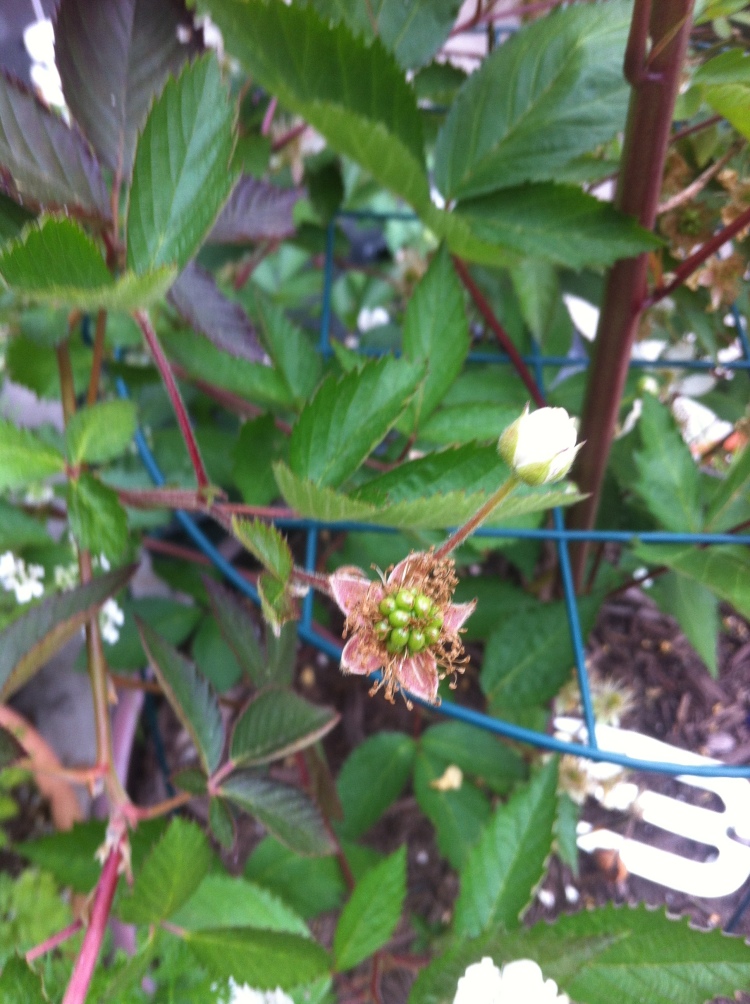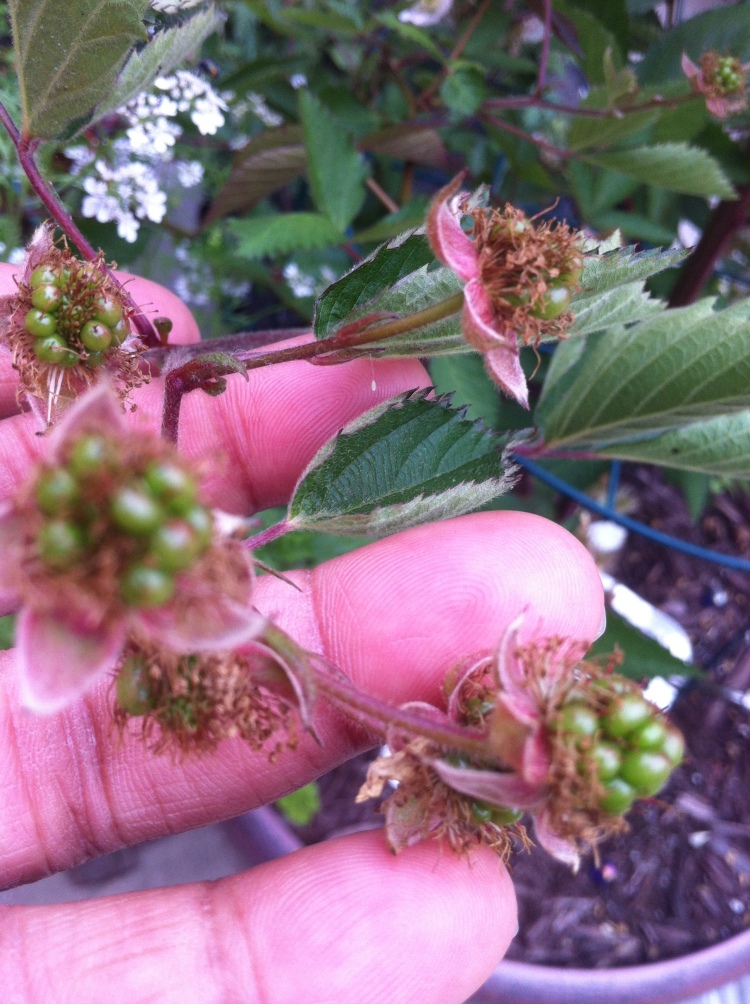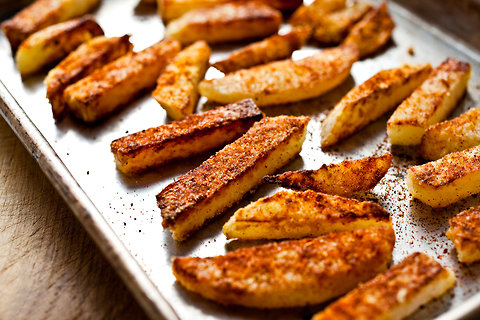Don’t Forget The Flowers
That Purple Stuff
I know this summer is gonna be spectacular because I’ve got three different basils growing in my garden.

Lemon Basil
Sweet Basil
Purple Basil
Related articles
- Herbs every garden should have: Basil (smallspacebigharvest.com)
- Basil spices up summer gardens and recipes (csmonitor.com)
There is Something About Rosemary
Rosemary has been in my life since I can remember. My mother kept a large rosemary bush in the front yard. The bush sat prominently aside the path to our front door. At times, little white flowers covered the bush and at other times bees buzzed around it doing what bees do. On occasion, my mother would send one of us girls out to pick some rosemary to add to some delicious dish she was making. I was always aware of the strong rosemary smell that lingered on my fingers after I had picked a few sprigs. I think that is why I enjoy rosemary to this day. Chicken baked with rosemary is regular winter time comfort food in our home.


I planted my rosemary a few years ago and was never happy with how it looked. It was nothing like the full healthy bush that sat in front of my house. It looked more like a stick with some scraggly branches growing from it. I researched companion planting and discovered that rosemary should not mix with basil. I have since learned that there is some debate regarding the do’s and don’ts of companion planting but I did notice a big difference when I moved my rosemary to her own pot.
Related articles
- Companion Planting for Vegetables, Herbs and other Garden Flowers and Plants (thrivefarm.wordpress.com)
- Companion Planting And Your Vegetable Garden (hbb2obm.com)
- Companion Planting And Your Vegetable Garden (backyardgardeningtips.com)
That’s Not Spinach…
That’s basil baby!

I am not exactly sure why my basil did a straight Godzilla in my herb container but I like it. These leaves are huge! How can a person not cook healthy when they have these aromatic beauties at arms reach. Wow! Right? The stir fry was quick and tasty.
Related articles
- Recipe: Herb Garden Potatoes with Fresh Spinach & Lemon (thekitchn.com)
- Intro to Cooking: Veggie Pockets (collegecandy.com)
Cool As A Cucumber
A Container Garden Superstar
My cucumber plant fascinates me. It grows so fast and gulps down water like nobody’s business. It seems to sprout cucumbers in a blink of an eye. The first year I grew one, my husband thought I was playing a joke on him and had placed a store bought cucumber on the plant. I insisted that it was real and asked him to pick it up. Needless to say, he was shocked and amazed that the tiny plant we had purchased, could produce such a big beautiful cucumber. Believe it or not, these cucumbers do not require much. A sunny area and plenty of water is really all it needs to flourish. As always, prepare your pot so it has proper drainage. For growing in containers, use a Bush Cucumber variety. This year I chose Bush Champion and Picklebush.
Related articles
- attack of the cucumbers. (backtoherroots.com)
- It’s Raining Cucumbers! (eatrundoyoga.com)
- How to Grow Cucumbers (igrowvegetables.wordpress.com)
Glorious Chives
Chives are a great addition to any container garden. They are easy to grow and resistant to many types of insects and disease. Chives are perennials so they regrow every year and they thrive in full sun with regular watering. My chive plant has gone without water for a couple of days and didn’t seem to miss a beat. I’ve had the same chives plant for seven years and it’s still growing strong.
To harvest, cut the stalks about one inch up from the base. It is often recommended to cut the chives back when the bulbs form to prevent them from flowering. But, just like with many of my other flowering herbs – I love the pretty flowers that form. By the way, chives flowers are edible. If you remove the central stem from the flower cluster, it will release the separate florets. How cool is that? Little, lavender flower petals in a salad…yum!
Related articles
- Chive Blossom Popovers from Pink Patisserie (karistaskitchen.com)
- Chives (susankolvoord.wordpress.com)
- Chive Blossoms Are Fleeting (watchcroton.com)
The Bush Bean Called Purple Queen
Yet another variety that I discovered grows well in containers. Actually, all the bush type beans are suitable for containers. The plants are more compact and do not require staking.
According to the directions, these beans produce their crop between a 1 – 2 week period. In order to get a continual harvest, sow new seeds every 2 weeks. I have to admit that I have not done this. I just have enjoyed watching the plant grow; sprout flowers (that look amazingly similar to orchids) and now tiny little green beans have emerged.
Miss Berry’s Babies
Bonsais
My family and I visited the US National Arboretum in Washington DC. Any garden lovers or lovers of things that grow or green thumbs or park lovers etc., should pay this place a visit. It is totally free and amazingly beautiful. This place is huge and is covered in delightful paths and nooks and pretty places with names like Asian Collections, Fern Valley, the Gotelli Dwarf and Slow Growing Conifer Collection, and the National Bonsai & Penjing Museum, Azalea Collection and the National Herb Garden.
A person could bring a book and a lunch and literally spend the whole day there. I really enjoyed the National Bonsai Museum. The description below is from the National Arboretum website:
The miniature masterpieces that we call bonsai and penjing are the pinnacle of gardening skill, and the National Bonsai & Penjing Museum has one of the largest collections of these timeless trees in North America. The Japanese art of bonsai, and its precursor, the Chinese art of penjing, are rooted in the traditions of Asian culture. The placement of branches, styling, and the pot all convey deep symbolism and reverence for nature.
The National Bonsai & Penjing Museum, established in 1976, is the most comprehensive of its kind in North America. It is dedicated to the display, education and scholarly study of bonsai and related art forms. The National Bonsai & Penjing Museum is undoubtedly one of Washington’s key attractions for plant lovers.
Garden Planning 3
Best Soil For Containers
It is best to not use the random approach when choosing your potting mix. When I think back on some of my less than successful crops; poor soil may have been the cause. If you have to choose between a cheap container and cheap soil, the cheap container would be the better option.


Now don’t get me wrong, you don’t have to spend a ton of money on your soil mix. But, there are important elements to look for in your mix. Namely, that it is labeled as a potting MIX as opposed to a potting SOIL. A mix has certain ingredients that will hold moisture well and facilitate in proper drainage. A nice, airy potting mix is preferable to a potting soil. The potting soil may become too dense and heavy when over watered. Alternately, when under watered or allowed to dry out, garden soil may become too hard.
There are several online articles that discuss making your own potting mix. That may be a little too advanced or time consuming for some (including myself). Nonetheless, I will share the directions for an all purpose mix I got from the Better Homes and Gardens website.
- 8 quarts potting soil with vermiculite or perlite
- 1 quart coarse sand
- 4 quarts sphagnum peat moss, compost, and/or rotted manure
…did that say rotted manure? ew.
So there ya have it. Soil, in a nutshell…or in a container. But seriously, when you head to your local garden store, you will be armed with potting power knowledge.
Garden Planning 2
What to Grow
 Some say that anything that will grow in the ground can grow in a container. While it is true that there are endless possibilities for container gardens, some plants produce better in containers. So far, I have had the best success with the bush varieties. Even Miss Berry is a bush type upright plant.
Some say that anything that will grow in the ground can grow in a container. While it is true that there are endless possibilities for container gardens, some plants produce better in containers. So far, I have had the best success with the bush varieties. Even Miss Berry is a bush type upright plant.
What is a Bush Variety?
Bush varieties can be found at most gardening stores. With the increase in home gardeners, and the limited space available, container gardening is rising in popularity. Bush plants are compact or determinate varieties of traditional plants. Determinate plants generally grow to about 4 feet tall, do not require much staking (if any) and do not need to be pruned or have their suckers removed. All in all this type is much better suited for containers.
What Grows Best?
- salad greens
- spinach
- eggplant
- swiss chard
- beets
- radish
- carrots
- peppers
- bush beans
- determinate/bush tomatoes
- bush summer squash
- bush cucumbers
- bush green onions
It’s Called Kohlrabi
…but it tastes like a cross between a cabbage and an apple. Or at least that is how it is described. I first saw one at my local grocery store and I thought – what the heck is that? I decided to be adventurous and brought one home. It turns out that it was pretty tasty and I have bought a few since.

I don’t think that Kohlrabi tastes like an apple or like cabbage. To me, it tastes more like a broccoli stem minus all the thick skin. By the way, Kohlrabi skin is thick like broccoli skin. I eat it raw but it can be prepared in other ways.
In early April I planted my Kohlrabi seedlings in a container. Some kind of green worm annihilated three of the four seedlings I planted. I was planning on pulling them up and then I noticed new leaves growing so I left them alone and just continued to water. I thought it was a root vegetable and I would have to pull it out of the ground. I stuck my finger down in the dirt to see if something was forming. Thank goodness for the internet because I found out I was wiggling my finger in the dirt in vain. Kohlrabi grows above ground. Notice the round formation in the picture above? That there is Kohlrabi… a cross between a cabbage and an apple 🙂
Arapaho Blackberry in a Container
How To: Grow Lavender Plants
In the world of aromatherapy, lavender is my favorite to use. It smells so divinely sweet with floral notes and slightly musky scent. The aroma takes me to a place of calm. I am interested in making lavender a staple herb in my garden. I searched online and found this article – How To: Grow Lavender Plants
Related articles
- How to Use Lavender from Your Skin Care Garden (battysblog.com)
Miss Berry – Dressed To Thrill
The whole idea of growing a blackberry bush in a container both excited me and worried me. Was I up for the challenge? Could I possibly grow, what is arguably nature’s candy, in a pot…in my backyard? The elusive blackberries of my childhood reincarnated on an urban block of concrete in this great nation’s capital? To quote Wide World of Sports – would this end in the thrill of victory or the agony of defeat?
Well well well… I am happy to announce that Miss Berry is not only alive and well but she is growing what looks to be little berries. About five weeks ago, Miss Berry began to bloom. I was walking to my car one morning and noticed some small bulbs on her branches. About a week later, the bulbs began to crack open and white flowers bloomed. The flower petals fell off and tiny berry clusters began to appear. I am so pleased.
I checked online and have found that I need to do the following:
- check that soil pH is between 6 and 7
- feed the plant with a 10-20-10 fertilizer
Discovering Kohlrabi It’s a Vegetable – NYTimes.com
Are you wondering what’s going on with these posts? I am using an application called “press this.” This app automatically creates a post with a link to any interesting article that I find on the web.
I recently planted some Kohlrabi seedlings and was searching online for some articles on how to grow it, when to harvest it etc. I came across this article and thought I would share. The article contains some informative tidbits as well as some recipes. Enjoy.
Growing wheatgrass for dogs – Baltimore Dogs | Examiner.com

Growing wheatgrass for dogs – Baltimore Dogs | Examiner.com.
One thing that I love about my garden is the random surprises that it brings me. I do not always spend time observing what goes on in my pots. This is especially so during the winter months.
Last summer, I spread some wheatgrass seeds in a pot and pretty much just let it be. Well after some time, the wheatgrass grew and some weeds made a home in the pot as well. I wasn’t sure if the wheatgrass was still good (don’t ask me why) so I just left it there. I figured I would get rid of it when I replanted the garden in the spring. Well lo and behold my little princess dog Ginger has been gnawing on the wheatgrass in the morning. I am not sure of how long she has been enjoying her morning wheatgrass but I watched her eat it and judging by the way her face was turned up to the sun and her playful smacking, she seemed to like it a lot. Generally, when Ginger eats the weeds that grow around the fence, she does it to purge what’s ailing her tummy. With the wheatgrass she is surely eating it for simple nourishment. So I write this note to suggest to other gardeners that wheatgrass is a good addition to any garden; and this is especially so if you have dogs or cats.
Related articles
- Today’s Did You Know? WHEAT GRASS 🙂 (keonawellness.wordpress.com)
- Growing Wheat Grass: How to Grow Wheatgrass Organically (growinganything.com)
- What do you know about wheatgrass? (foodnewschick.wordpress.com)





































